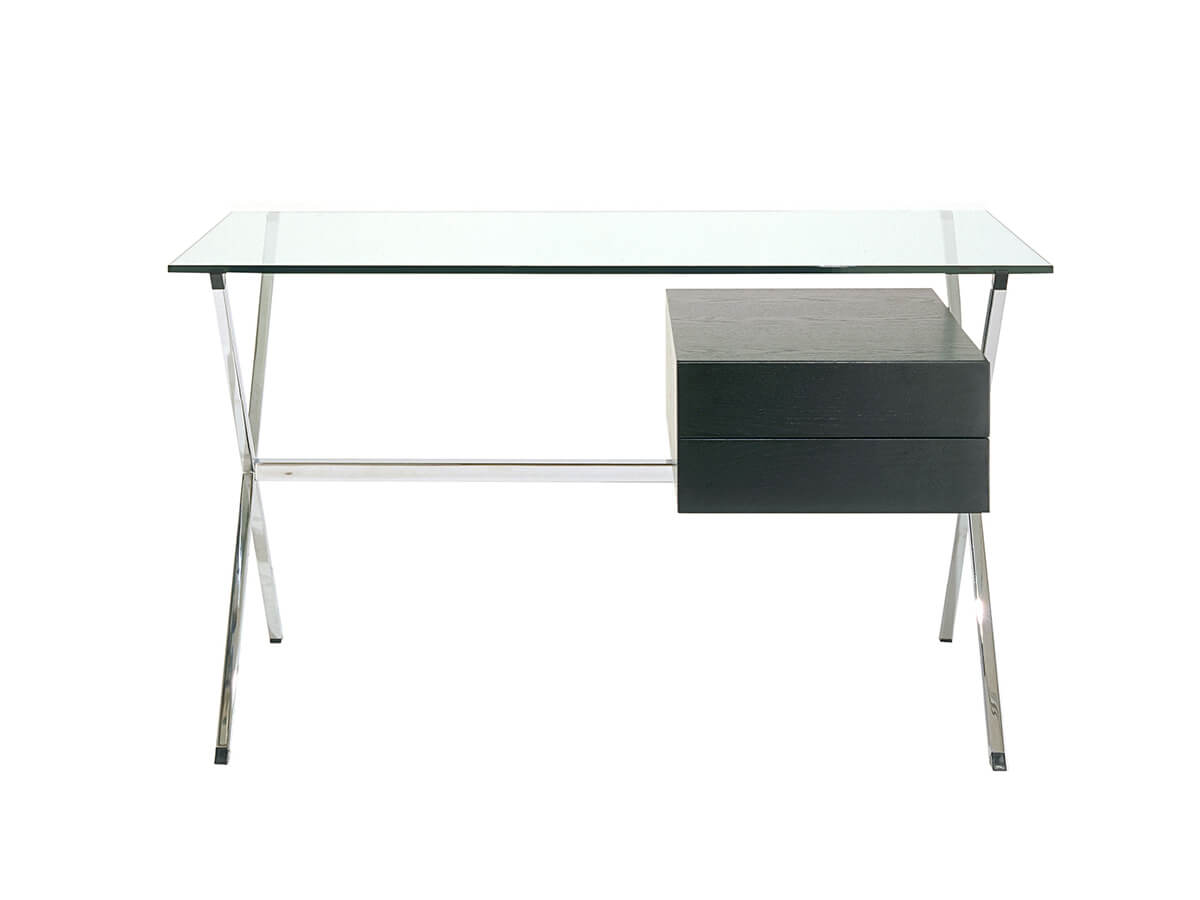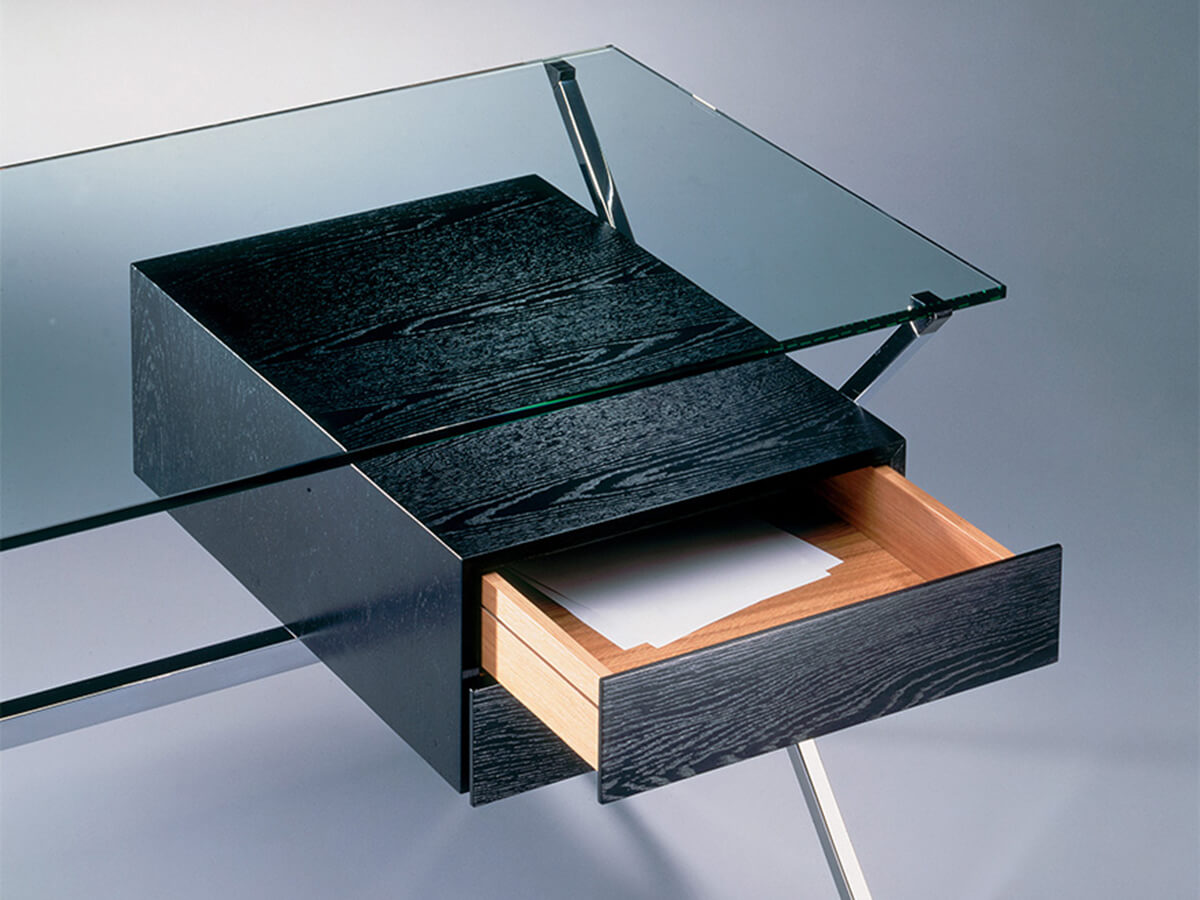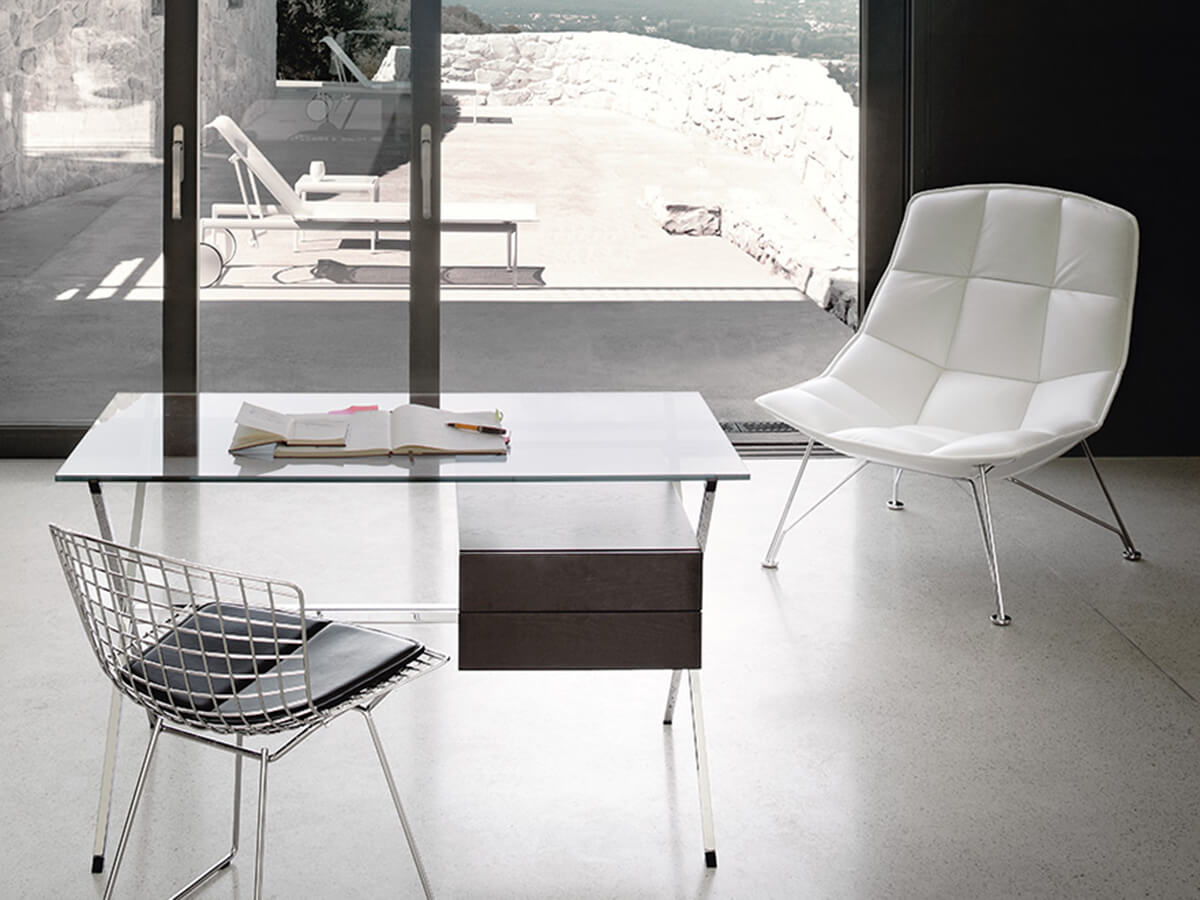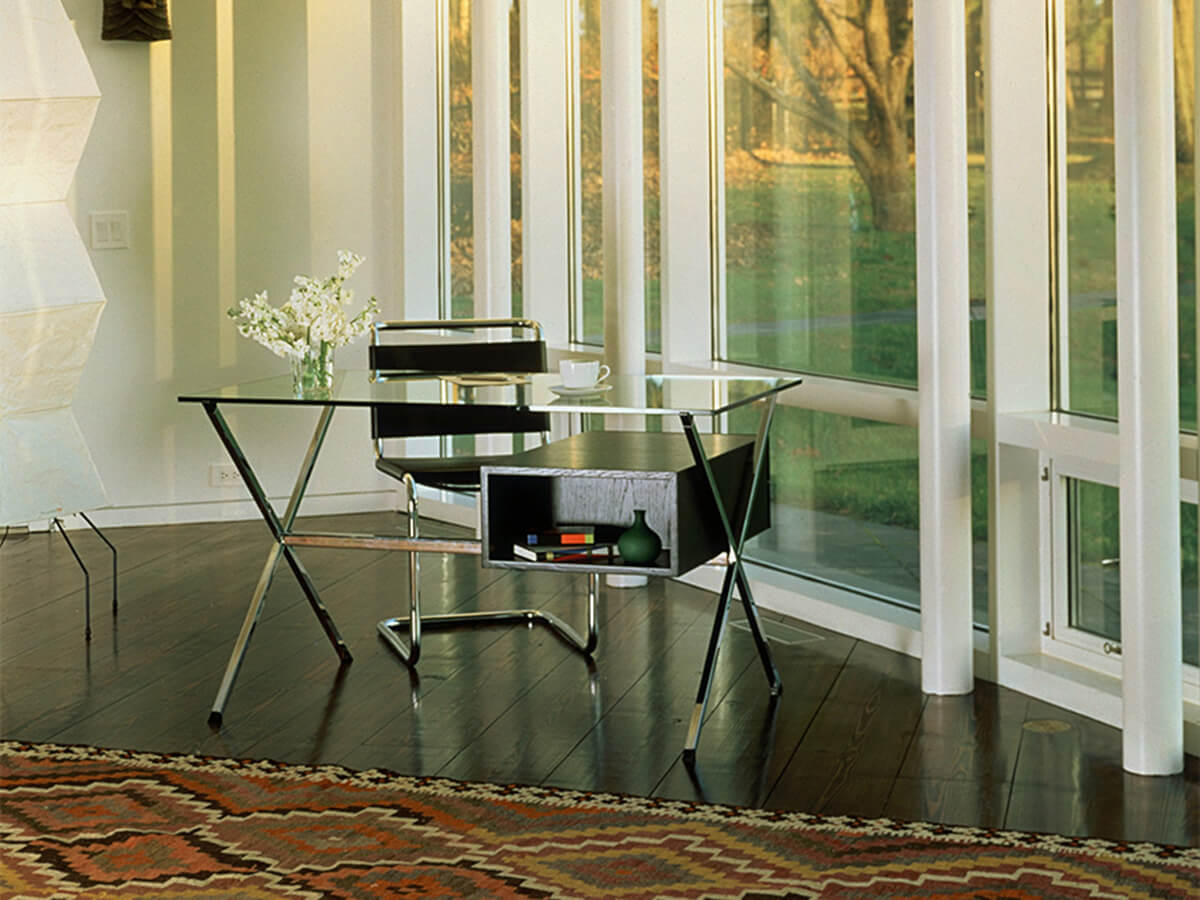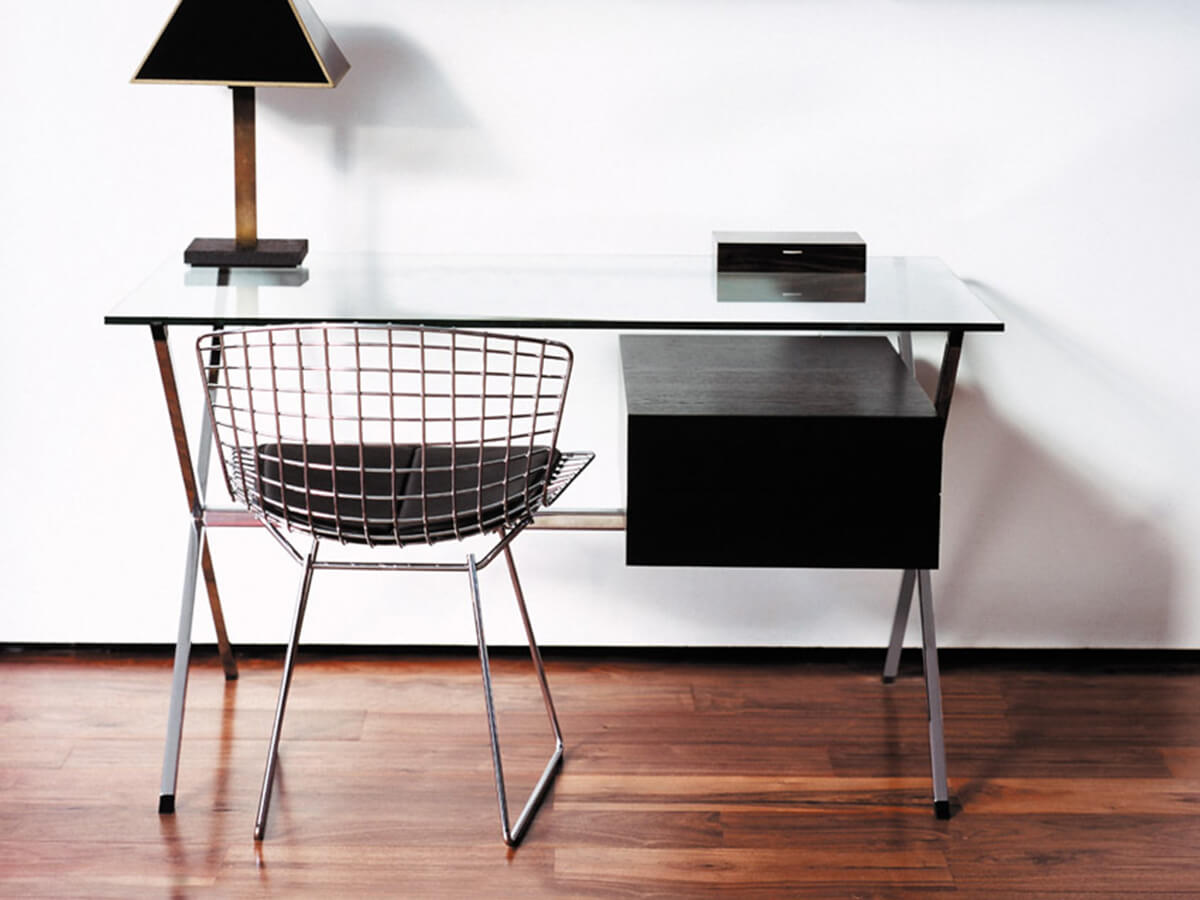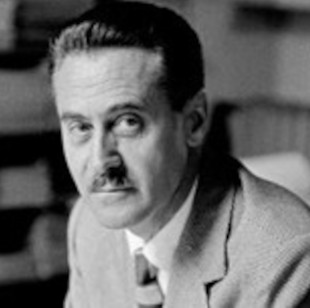Knoll
Albini Desk
Price starting from € 3.672,00*
*Price valid for the version with chest of drawers in black stained oak (cod. 80DRE).
An object halfway between an office and a private studio, capable of combining its stylistic rigor with undisputed elegance. Designed by Franco Albini, this writing desk has a chromed steel tubular base to which a chest of drawers with an open compartment in the back and two drawers in the front is anchored. The overlying top in transparent glass lightens the figure as a whole, softening the formal rigor deliberately sought by its creator. Precisely this element of breath makes the Albini desk a versatile element of the house, which can be freely placed in the study areas but nevertheless can be managed in other spaces of the house according to taste or need.
W.122 x D.67 x H.70 cm
Salvioni Design Solutions delivers all around the world. The assembly service is also available by our teams of specialized workers.
Each product is tailor-made for the personal taste and indications of the customer in a customized finish and that is why the production time may vary according to the chosen product.
To discover the full range of services available, visit our delivery page.
Personalize your request
Chest of Drawers
Select
Select
Select
Landed in the United States at the beginning of the ‘30s, Hans Knoll, a young German-born son of a furniture-maker in Stuttgart, proposed to import into the new continent the modern European design, contemporary heritage of the Bauhaus. Died prematurely, his work was continued by his wife, Florence Knoll, who succeeded in establishing lasting partnerships with some of the greatest exponents of the modernist movement. Few years later the Knoll Associates was founded. Today, Knoll is not only a company of re-selling historic furnishings of great artistic value, but continues to innovate by offering creations of the major international design brands both in the home area and in the office furnitures sector.Read more
Designed by
Franco Albini
Franco Albini (1905-1977) was one of the great masters of Italian Rationalism, both in the field of design and architecture. Since the 1930s he distinguished himself as one of the leading elements of the group of young architects who, gathered around the Casabella magazine, advocated the peculiar Italian interpretation of the Modern Movement and the Bauhaus that were forever changing European and world architecture, and which took the name of Rationalism in Italy. Putting functional values at the center, his creations did not try to hide the constructive elements, but rather emphasized them and put them in the foreground. After the war he began to collaborate with Franca Helg and intensified his theoretical and teaching activity, centered on the search for a synthesis between artisan tradition and industrial practice. As a designer he has worked with various realities such as Cassina, Arflex, Poggi and Bonacina; his creations are also re-edited by brands such as Knoll and Nemo. Among the major legacies of his work as an architect are the planning of Line 1 of the Milan Metro, in collaboration with Bob Noorda for the graphics, and the Rinascente building in Rome. Most of his post-war projects were co-signed with Franca Helg (1920-1989), who will carry on the activity of Studio Albini even after the death of its founder.Read more
